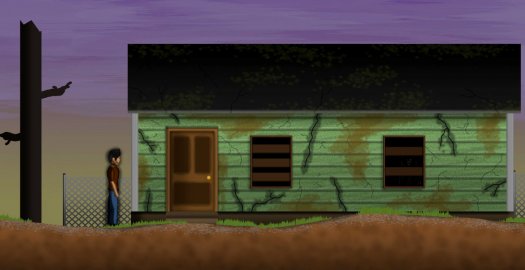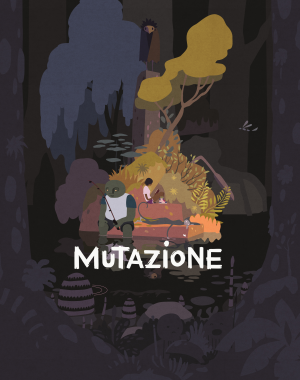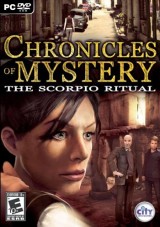Review for The Grimsworth Reports: Woodfall

Investigation has always lent itself naturally to adventure games. Several of the genre’s greatest protagonists are either professional detectives or amateur sleuths solving mysteries for their own personal ends—or just adventurers who at some point have to borrow from the investigator's toolbox to progress. Unlike real life, games have typically been constructed so that if you do everything right, all of the pieces fall into a perfect script of success. But as the genre has developed, it has become increasingly defined by player choice, introducing the very real possibility of failure. What if you could say the wrong thing and alienate someone with information you needed? What if you could make the wrong decision, sending you irreversibly down an undesirable path? Or even more challenging: what if you did everything right and were still confined to a path that would yield limited results?
Jenito's The Grimsworth Reports: Woodfall is a game that nobly attempts to address the complexities of real world criminal investigation behind these questions. A classic adventure with a dash of stealth and survival horror thrown in the mix, it is a genuinely choice-driven experience in which decisions must be made that create a narrative path unique to each playthrough. As the work of a sole developer, Daniel Hall, it is a laudable achievement, crafting a solid and compelling atmosphere of mystery and horror. The Grimsworth Reports gets most everything right on a conceptual level, which makes its production drawbacks all the more unfortunate. Overall, it is a solid and enjoyable game that could have been made stronger and more emotionally resonant with a greater professional polish.
You play as Chuck Grimsworth, a special agent with a focus on “especially violent or perhaps even paranormal” crimes, as he is recruited by the local authorities of a mysterious town called Woodfall to assist in the investigation of a bewildering and brutal murder. The deeper you dig, the more pieces you uncover to a vast and multifaceted conspiracy branching off into two connected but distinct directions, of which only one can be sufficiently covered over the course of your investigation. One of the mysteries concerns a white male supremacist group called The Old Paths—remnants of an ancient cult, The Firstborn. The other involves the troubled history of the wealthy Thomas family, who ruthlessly controlled Woodfall and were so despised for their cruelty that the community had no compassion for them when they lost everything in a fire. According to local legend, the Thomas matriarch still haunts the streets of Woodfall in a quest for vengeance.
While it is possible to acquire fragments of information about both of these central mysteries in a single playthrough, it is not possible to reveal the full scope of both. To complicate matters further, there are moments throughout in which you must choose between pursuing leads on the investigation and protecting the lives of Woodfall's townspeople, potentially taking you down a path in which human life is prioritized over plumbing the depths of either case. In addition to the main investigation, characters will often ask for your assistance, leading you on various entertaining side quests.
As far as gameplay goes, Woodfall is something of a genre-bender. Mostly a classic adventure with an interactive, choice-driven narrative, it also incorporates sparing use of stealth and survival horror in places, mostly when your investigation calls for you to explore areas The Old Paths would rather you didn't. Some of these are traps, and there is usually some kind of warning to steer you away from them. Others you will need to explore, utilizing nearby objects to hide until the threat has passed. These parts are just challenging enough to offer a welcome change of pace while not so intense as to turn off those who are averse to a little danger in their adventures. While you can (and probably will) die, death simply sets your progress back slightly without seizing any important items you gained prior to your demise.
Most areas are safe, though, and the story emphasizes thorough exploration of its environment and interacting with as many of the town's residents as you can—as often as you can. Its puzzles are not particularly challenging, but are enough to keep you from feeling like the game plays itself. While you will need to use certain items to progress, they usually aren't difficult to find. A lot of times they are given to you when you choose a certain path; when they aren't, it is often as simple as talking to various characters until you find a lead and then talking to the person who will give you what you need. There are points at which finding certain objects is more difficult, though the challenge usually isn't overcome by puzzle-solving but through investigation and perseverance. There are also a few puzzles set up by particular characters (mostly The Old Paths) to ward off intruders, which consist of physics puzzles, number games, riddles, and so on. These are not especially remarkable either, but the way they are crafted into the narrative is unique and mostly effective.
If needed, a helpful in-game hint system can be consulted, offering assistance in increments as desired (generally “small hint,” “big hint,” and “the solution”). I did my best not to use hints, though I did have to consult it once the first time through and utilized it sparingly in subsequent playthroughs. Regrettably, the reason I couldn’t avoid doing so entirely is that at least one of the puzzles is slightly broken—or at least, it was in the early review copy I played. To be as vague as I can so as not to spoil it, there is a section that asks for you to deduce a certain combination. I was certain I had worked out the combination correctly, but the game told me otherwise. Only after consulting the hint system did I find that two numbers had been swapped from what logically should have been the correct combination. Since veteran adventure gamers know to trust trial-and-error over design—and since the solution can easily be revealed by the hint system—this doesn't quite amount to a dead end. But it is still unfortunate for those who wish to play the game without relying on help.
One of the most intriguing aspects of the gameplay is its sense of exploration. Like many adventure games, objects and areas that you can interact with are usually indicated—in this case by an exclamation point that will appear above your head as you draw near. However, there is a twist on this: certain hotspots, including some you will need to find in order to advance, are not made apparent until you use the “investigate” action on them first to make them interactive. A few are genuinely tricky to see, but while pixel hunting is often derided as evidence of poor game design, The Grimsworth Reports manages to make it a compelling part of the experience that heightens the sense of exploration and fleshes out the gameplay. This is mainly because it always feels justified by the narrative, putting you believably into the role of an investigator who needs to dig a little deeper to see beneath the surface.
The most significant aspect of gameplay is player choice. The story is divided into various sections, prompting you to choose between two or three paths impacting the investigation. On top of that, it is fairly easy to alienate or offend some of the townspeople. While that won't keep you from progressing, it will make certain side quests impossible. My first taste of this was when I stepped into the town's pub, The Steed. The owner, Stan, is a devout Christian with strict rules for his bar including one decreeing that patrons can only consume one alcoholic beverage per hour. I told him his “rules stink,” and suddenly nobody in the bar would talk to me. While later on I found that Stan and most of his customers had forgiven me, one loyalist who would otherwise have offered me a side quest remained offended and wouldn't speak to me for the rest of the game. So there are real consequences to your decisions, and while these repercussions sometimes feel arbitrary, they end up making the game stronger as it feels like a real-world investigation in which outcomes cannot always be adequately predicted.
In total, there are three unique endings and eight side quests. Two of the three endings are only possible if you choose earlier paths that unlock certain areas. Similarly, whether or not you are able to complete certain side quests depends on what decisions you make. The endings are designed to be incomplete and unsatisfactory, with Chuck only getting to the root of one part of the mystery or otherwise choosing to put human life above it. As for the side quests, it is possible to complete seven of them in one playthrough, though you are unlikely to make the requisite decisions for this the first time, and two of them are offered by an embittered married couple—choose to help one of them, and the other refuses to talk to you or offer a side quest. Given the limitations of each ending and the impossibility of completing all of the side quests in a single playthrough, the game is clearly designed to be played more than once, and its autosave feature keeps track not only of your in-game progress but of past playthroughs as well. It took me four times to complete the game at 97%, unlocking all three of the endings and completing all eight of the side quests.
While the look of the game is nothing extraordinary, the side-scrolling 2D graphics are serviceable and contribute to a compelling sense of atmosphere. Locations are admirably diverse for the context, including common small town settings like shops and houses as well as those that might be less expected—a dense forest, a mountainous pass, an eerie underground labyrinth. The overall feeling is one of mystery, and there are parts that are genuinely unnerving. A strong and well-utilized score does a lot of the work here, as all is mostly quiet until the stillness is disrupted in key moments by sinister musical turns. I found the amount of horror to be perfectly appropriate for its context—just enough to send the odd shiver down the spine and keep you engaged, but not so much that it freaks you out to the point where you won't want to keep playing.
With everything The Grimsworth Reports does right, it’s a shame that it is clearly limited by budget restrictions. Overall, it lacks polish in the mostly forgivable ways you might expect from an indie game by a sole developer—no voice acting, rudimentary animation, etc. As for the story, it has a lot of depth and imagination that is not always presented in a deep or imaginative way. A lot of the mythos of Woodfall is conveyed through extensive chunks of dialogue that are not especially artful or interactive, and each ending is presented as a series of still images blandly informing you of the events transpiring rather than allowing them to unfold organically through gameplay. The rule of thumb in creative writing circles comes to mind: “show, don't tell,” an adage that could have benefited this game greatly.
The control system, too, is unrefined in a way that is sometimes annoying. When using the mouse, there are various smart cursors (investigate, walk, run, and interact) assigned to the left button, with the right button alternating between them. This works well enough, and there are two other methods of control offered (keyboard and gamepad) if you aren't into pointing and clicking. Either way, one problem is that you are not able to interact with items or areas until you approach them. Most of the time this isn't a tremendous issue, but it can become tedious when puzzles require you to interact with several items (say, a series of levers) and you have to keep physically moving between them to arrive at the solution. I can't help but feel this is another area where some simple refinement could have made this game even stronger.
Ultimately, there is a lot to love about The Grimsworth Reports: Woodfall. The game has the ability to transform what might have been shortcomings (the pixel hunt, the randomness of consequence) into strengths, which should appeal to veteran adventure gamers, while its accessibility and helpful in-game hint system make it perfectly suitable for newcomers to the genre. While overall it could stand some additional refinement and its budget limitations are clearly evident throughout, it is nevertheless an enjoyable experience with a strong atmosphere of mystery and fear, and I hope to see Chuck Grimsworth again in the future.



_capsule_fog__medium.png)

























